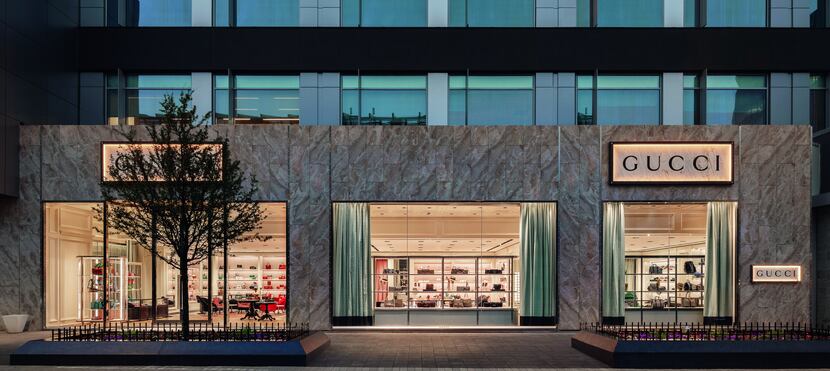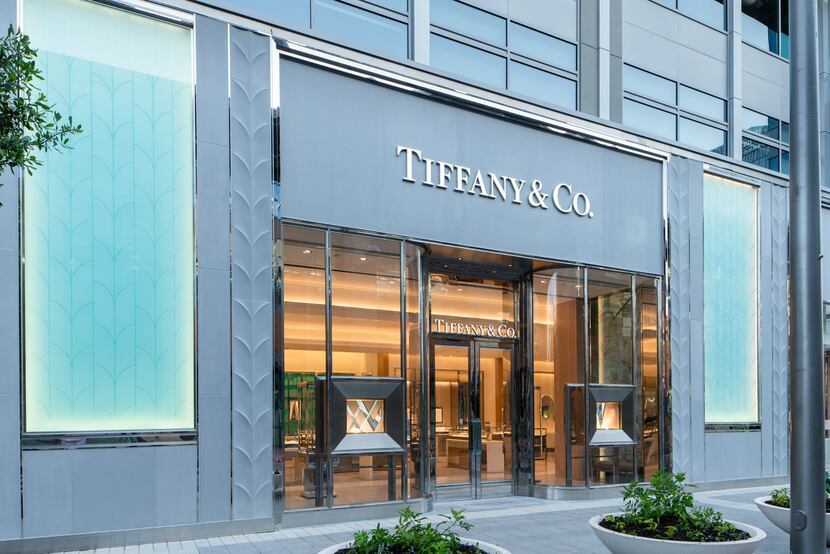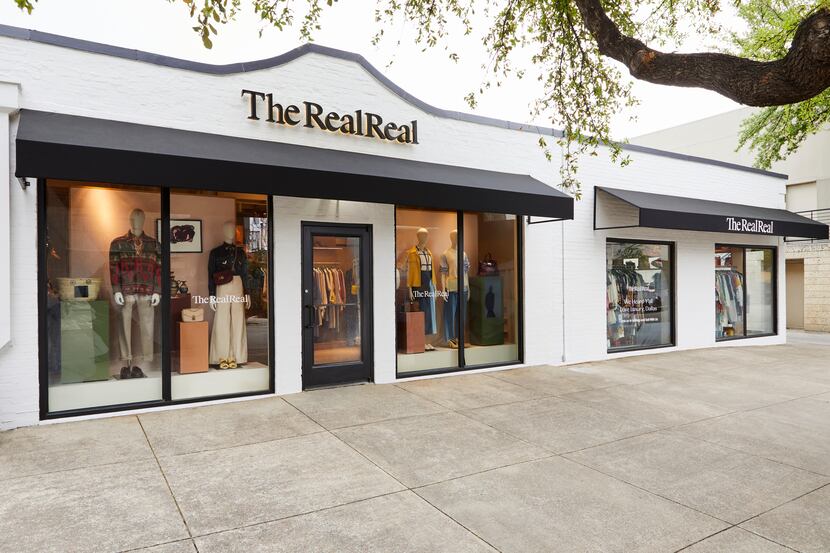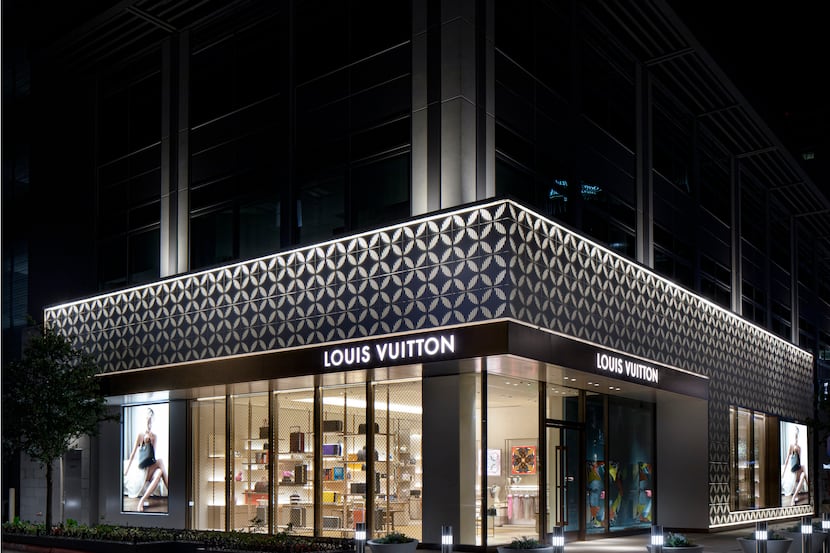Forget Fifth Avenue and Rodeo Drive.
Luxury retailers are rushing to open new and increasingly lavish stores in suburbs and the vacation hot spots where the wealthy have retreated during the pandemic. Gucci is heading to Oak Brook, Ill.
Moncler recently set up shop in Vail, Colo. Dior has a new storefront in Scottsdale, Ariz., and Louis Vuitton in Plano, Texas. And Hermès, the maker of the $500,000 Birkin bag, is settling into suburban Detroit.
”There’s a bit of a luxury land grab going on,” said David Hurley, executive vice president of the Watches of Switzerland Group, which has opened eight stores this year, including Breitling boutiques in San Jose, Nashville and suburban Philadelphia. Like many others, we’re doubling down on store expansion plans.”
Though the pandemic has battered the economy, casting millions of people out of work, the wealthiest among them flourished from a booming stock market and soaring home values. Americans have saved $2.6 trillion since the coronavirus outbreak, with the richest quintile accounting for 70% the vast majority of that tally, according to Oxford Economics.
With travel and dining out largely off the table, many are splurging in other ways. Sales of luxury homes - with a median price of $1.03 million - surged 88% in the most recent quarter, far outpacing their lower-priced counterparts, according to data from national real estate brokerage Redfin.
Demand for second homes, which more than doubled early in the pandemic, remained elevated through May. High-end automakers Audi and BMW saw revenue spike 90% in the most recent quarter, while Porsche sold a record 36,300 vehicles in the first half of the year. That shift in spending has padded the fortunes of high-end brands.

Sales at fashion house Hermès rose 127% in the most recent quarter, while profits at luxury giant LVMH Moët Hennessy Louis Vuitton are up fourfold from a year ago. Demand for Hermès bags, often considered investment pieces because of their high resale value, remained brisk during the pandemic, with one selling for as much as $450,000 in auction last year.
Brands are aiming to cash in on the luxury boom by moving even further upmarket, according to Kayla Marci, an analyst at retail intelligence firm EDITED.
Designers like Chanel, Gucci and Louis Vuitton have marked up handbags, and many others are adding new stores with VIP suites, private shopping appointments and concierge services to accommodate the wealthy. As a result, commercial real estate brokers across the country are reporting unprecedented demand from luxury retailers trying to take advantage of cheap rents.
”The pandemic has decentralized luxury retail,” said Milton Pedraza, chief executive of the Luxury Institute, a market research firm in New York. “It seems like everyone has moved to the suburbs or to their vacation homes - so that’s where the stores are going, too.”
When New York’s elite flocked to the Hamptons to ride out the coronavirus pandemic, luxury retailers hurried to meet them there. Gucci opened a two-story boutique. Christian Louboutin and Dolce & Gabbana set up pop-up shops. And Watches of Switzerland showed up this summer in a vintage Airstream trailer filled with watches retailing for as much as $50,000. The aluminum vehicle was most recently parked at the Hampton Classic, a week-long horse show, where it was stocked with timepieces from Grand Seiko, TAG Heuer and Ulysee Nardin.
”We want to be where our clients are - and right now, a lot of them are in the Hamptons,” Hurley said. Real estate developers say that has galvanized luxury retailers to look beyond the iconic fashion districts of Beverly Hills, Manhattan and Miami.
The mass migration to online shopping early in the pandemic, analysts say, gave brands a clear picture of how living patterns were being reshaped.
”E-commerce by nature is hyperlocal - you’re shipping from a warehouse to a specific address, so you know exactly where the demand is,” said Justin Abrams, chief executive of FlagshipRTL, which helps fashion and lifestyle brands set up physical stores using short-term market tests. “Brands are saying, ‘What are the Zip codes we need to win? Let’s go there.’”

That, he says, is how Moncler recently landed in Vail, Colo., and why Proenza Schouler opened pop-ups in East Hampton, N.Y., and Greenwich, Conn.
“There’s a lot more flexibility now,” he said. “There’s no need to take a 10-year lease on a space on Rodeo Drive anymore.”
In Aspen, broker Angi Wang says luxury retailers that once looked to the ski town for seasonal pop-ups are progressively committing to larger, long-term spaces. Among this summer’s newest entrants are Balenciaga and Overland Sheepskin Co.
”It used to be that our market was too small, but now everyone wants to be here permanently,” said Wang, who works for the real estate firm Setterfield & Bright. “They’re clamoring to get in, to the point where we honestly don’t have any space left.”
When the nation’s most expensive mall opens its luxury wing next week, nearly two dozen high-end brands, including Saint Laurent, Anne Fontaine and Dolce & Gabbana, will be nestled in a sprawling shopping and entertainment complex in East Rutherford, N.J.
The $6 billion American Dream mall will feature a two-story Hermès flagship and a 110,000-square-foot Saks Fifth Avenue department store. But there will also be other markers of luxury: an indoor koi pond, oversized topiaries and a sculpture garden designed by Jonathan Adler.
Executives and analysts say such niceties are carrots to pandemic-weary consumers. Many brands are springing for larger and more opulent spaces and outfitting them with private shopping suites, cocktail lounges and live-streaming studios.
“It’s all about bold flourishes that say: ‘Come see us because we want to see you,’” said Ken Downing, chief creative officer for mall developer Triple Five Group. “Customers need a reason to visit.”
Like many other industries, luxury retail came to a standstill early in the pandemic, as companies navigated mandated shutdowns and tried to keep losses at bay. Neiman Marcus, the century-old chain of high-end department stores, filed for bankruptcy, and many others shuttered locations and halted construction plans.
”At the beginning, everybody froze,” said Todd Sachse, founder of Sachse Construction, which works with high-end brands including Gucci, Louis Vuitton and Ferragamo. “Unless a project was already under construction, it came to a screeching halt. But things picked up late last year, and now there’s frankly way more opportunity than we can handle.”
Many brands, he said, are updating pre-pandemic plans and pouring even more money into new stores. One luxury store, he said, was just about to open it doors last fall when the brand decided to pump up the opulence.
”We literally got a call saying, ‘Stop, don’t finish it. It’s not nice enough. We want to upgrade it even more,’” he said. “Luxury brands have not only survived covid, they’ve come out with higher sales and higher profits.”
The fast-growing luxury resale market, which has gotten a boost from online consignment services like the RealReal and Rebag, has also added to the allure of designer handbags, watches and jewelry, particularly among younger shoppers.
At Watches of Switzerland, sales of pre-owned Rolexes and Omegas are becoming a bigger part of the business. The company is adapting in other ways, offering more private appointments and creating separate areas for a growing range of customer needs: Cocktail bars and lounges for those who want to browse leisurely, and quick-service stations for those who stop in to pick up an order or get a watch serviced.
”Stores are becoming hybrid spaces to cater to consumers’ remote lifestyles,” said Kayla Marci, an analyst at retail intelligence firm EDITED. “Experiential retail has been a significant trend to entice consumers back into the store.”
Luxury brands, she said, have been scaling back on wholesale partnerships in recent years in favor of selling directly to consumers. Having their own stores gives brands increased control over what they sell, and for how much, translating to higher profit margins.
”A lot of companies, large and small, want to bypass the big guys and go direct to consumers,” said Pedraza of the Luxury Institute. “When you open a store in a particular area, it creates buzz.”

Jonathan Adler, the potter and designer known for his modern home furnishings, closed all eight of his U.S. stores early in the pandemic. But he says demand remained strong, with many customers - millennials and “squillionaires” alike - calling in orders by phone. Others made purchases by text messages. One first-time customer recently dropped $35,000 after receiving a company catalogue in the mail.
As the world has reopened, he has doubled down on physical locations with larger footprints. A new store at American Dream is opening this month, followed by stores in Dallas and New York’s SoHo neighborhood.
“We’ve taken advantage of favorable lease terms and demand for our product,” Adler said. “We’ve invested in our technology, too, but brick and mortar is still key. There are still folks who just want to sit on their sofa before they purchase it.”
Abha Bhattarai, The Washington PostWP Bloomberg
Looking for more retail coverage? Click here to read all retail news and updates. Click here to subscribe to D-FW Retail and more newsletters from The Dallas Morning News.
